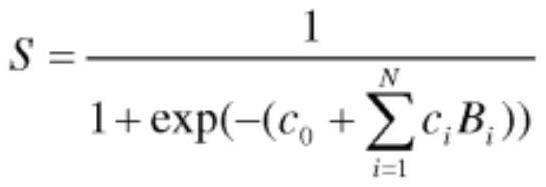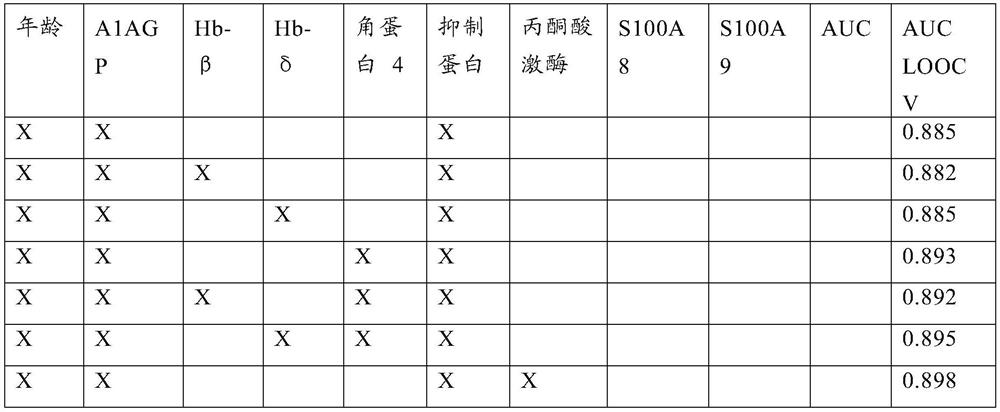Periodontitis diagnostic methods, uses and kits
A periodontitis, detection agent technology, applied in the field of oral care, can solve the problems of lack of chairside application technology, inability to analyze biomarkers, no implementation, etc.
- Summary
- Abstract
- Description
- Claims
- Application Information
AI Technical Summary
Problems solved by technology
Method used
Image
Examples
Embodiment Construction
[0042] In a general sense, the present invention is based on the sensible insight that periodontitis can be distinguished with sufficient accuracy from a healthy or gingivitised mouth based on the measurement of a small number of protein biomarkers. In particular, it has been found that as few as two proteins can act as biomarkers in human patients' saliva samples for identifying the presence or absence of periodontitis.
[0043]The biomarker proteins were alpha-1-acid glycoprotein (A1AGP), arrestin, S100 calcium binding protein A9 (S100A9), pyruvate kinase (PK) and S100 calcium binding protein A8 (S100A8). According to the invention, the following combination of these proteins is used for the diagnosis of periodontitis:
[0044] (i) at least one of arrestin and S100 calcium binding protein A9 (S100A9), and alpha-1-acid glycoprotein (A1AGP); or
[0045] (ii) Pyruvate Kinase (PK) and S100 Calbindin A8 (S100A8).
[0046] The subject's age can optionally be included as an addit...
PUM
 Login to View More
Login to View More Abstract
Description
Claims
Application Information
 Login to View More
Login to View More - R&D
- Intellectual Property
- Life Sciences
- Materials
- Tech Scout
- Unparalleled Data Quality
- Higher Quality Content
- 60% Fewer Hallucinations
Browse by: Latest US Patents, China's latest patents, Technical Efficacy Thesaurus, Application Domain, Technology Topic, Popular Technical Reports.
© 2025 PatSnap. All rights reserved.Legal|Privacy policy|Modern Slavery Act Transparency Statement|Sitemap|About US| Contact US: help@patsnap.com



